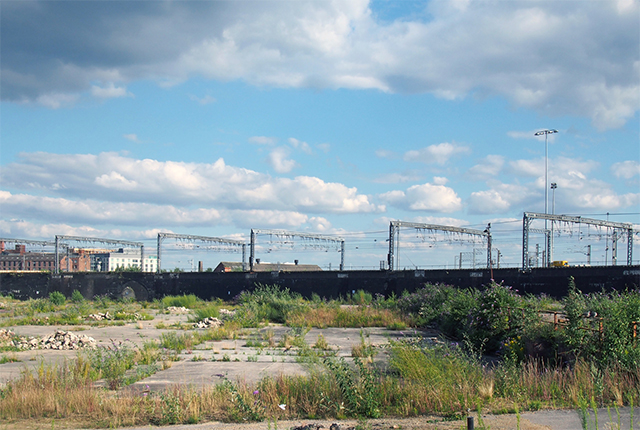BGS award scoop for brownfield digital planning tool
25/11/2020 By BGS Press
BGS has won an award for its development of the Brownfield Ground Risk Calculator, an innovative digital planning tool designed to assess the ground risk and cost of developing UK brownfield sites.
The BGS landed the top prize for Best Scientific/Technical/Digital Advance at this year’s Brownfield Awards, at a special online ceremony on Thursday.
The awards are dedicated to recognising best practice, innovation and excellence across the brownfield, regeneration and contaminated land industry and are judged by leaders in the field.
The Brownfield Ground Risk Calculator involved over three years of careful development by experts at the BGS in collaboration with partners Greater Manchester Combined Authority (GMCA) and Gateshead Council. The project has also received support from the Environment Agency and The Coal Authority.
Judges rewarded the impressive tool for its use of digital innovation and applauded BGS for its engagement with stakeholders.
Kate Royse, Chief Digital Officer at BGS said:
“This award demonstrates the impact of successful interdisciplinary working across organisations but most importantly, the value of co-designing digital geoscience. It’s fantastic news for science, and industry, both for BGS and our stakeholders.
“We’ve learned a lot working with Greater Manchester Combined Authority, Gateshead Council and their respective partner organisations, and we will continue to develop the tool in future.”
The UK is experiencing a huge demand for housing growth coupled with a shortage of supply. Brownfield sites present a sustainable solution by making use of existing developed land.
Understanding and communicating the scale of risk and cost associated with ground conditions is essential for planners, developers and local authorities before brownfield sites can be developed.
The Brownfield Ground Risk Calculator shows the scale at which potential brownfield sites are expected to be affected by soil or groundwater contamination. It also evaluates geotechnical hazards, such as land stability and ground gases which can affect building design, and estimates the costs required to mitigate the risks.
The calculator uses over thirty publicly available environmental datasets published by BGS, the Environment Agency and The Coal Authority. Using the data, it produces a ‘ground risk score’ and remediation cost estimate for each site and presents it in a geographical information system (GIS).
David Hodcroft, Infrastructure Lead, Greater Manchester Combined Authority, said:
“The BGR calculator has led valuable insights into the use of subsurface information and the application of new ground risk models to address real-world challenges faced by Greater Manchester Combined Authority.
“We have utilised outputs from the calculator to inform viability assessments across Greater Manchester helping us to determine the likely cost ranges to remediate individual sites. The project has developed a strong working relationship between BGS and GMCA and we are looking forward to future collaborations.”
BGS geoscientist Darren Beriro is a specialist in brownfield sites who led the digital development.
He said: “When developing post-industrial brownfield land, historic contamination often needs to be remediated to ensure the land will be safe, often at a significant cost to the developer or land owner.
“A closer look at brownfield sites in central Manchester for example, shows that some land is likely to be more expensive per hectare to remediate than others.
“We know that decisions made early in the planning process can impact the viability of building new homes and such decisions are likely to have increasing importance given the economic impact of COVID-19 pandemic on local authorities and the housing sector.
“Our aim is to now make the calculator more widely available to support public bodies, developers and land owners in making informed decisions, early on.”



